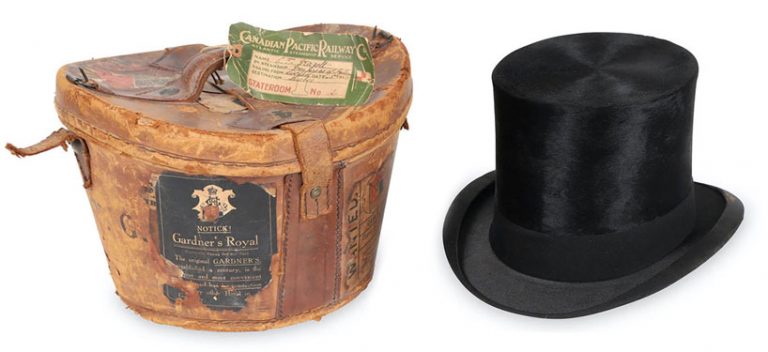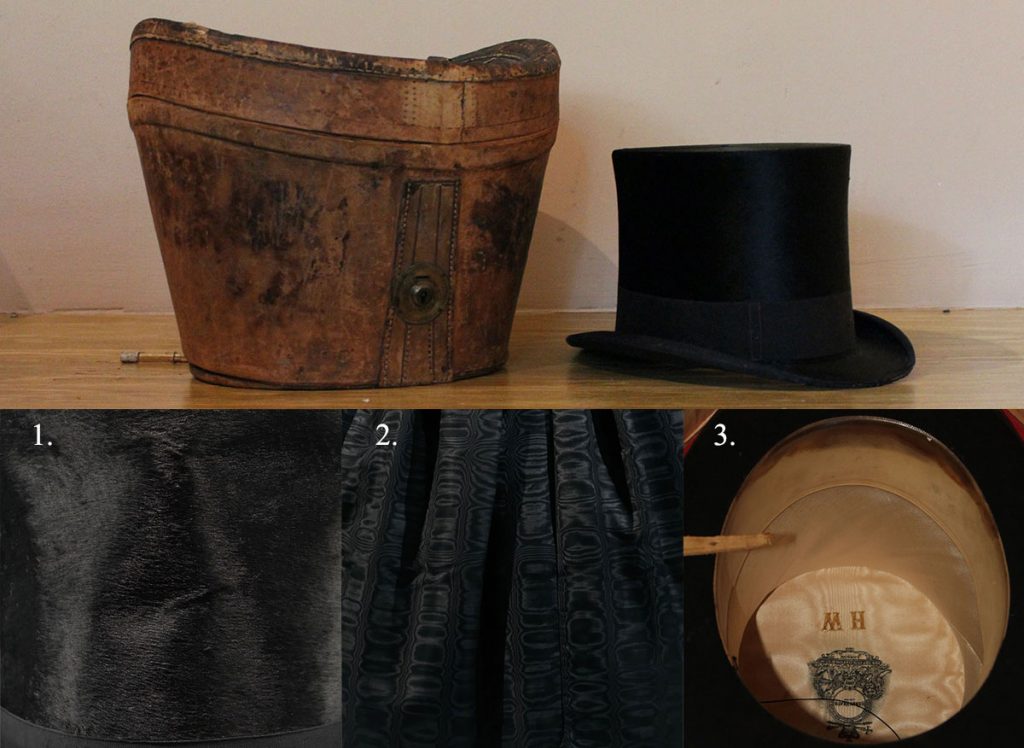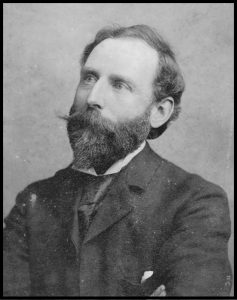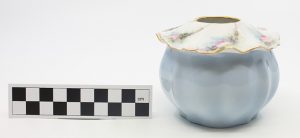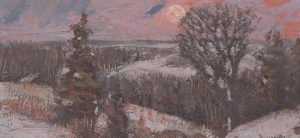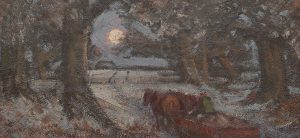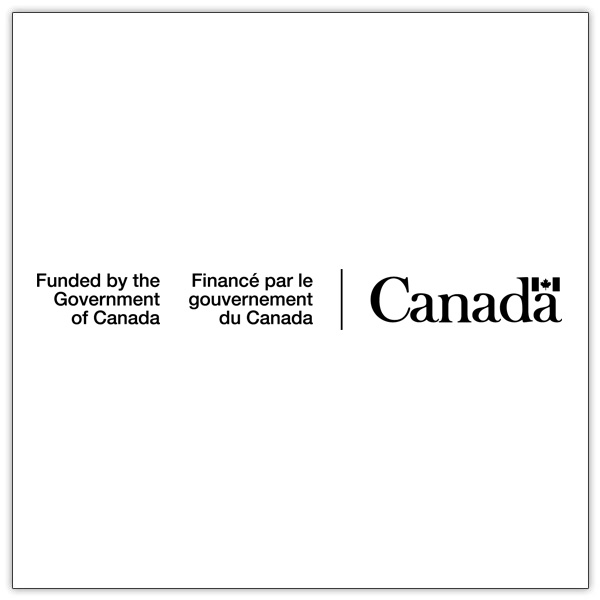The collection at Homer Watson House & Gallery is known for its original Homer Watson paintings, however it is comprised of many other interesting objects and archives too. One of the lesser-known items in the collection is a top hat that once belonged to Homer Watson. Aside from its ownership, documentary information about the hat and carrying case are scarce. Objects have many features and characteristics that can provide insight into historical contexts and allow us to place them more meaningfully in the lives of those who owned them. Continue reading to learn about the different components and features of Homer Watson’s top hat and what evidence they can share about the object and the man who wore it.
Materials & Physical Qualities – What can the features of the hat and case tell us about the past?
- Black silk plush exterior. This material is somewhat similar to velvet, but less fuzzy, resembling smooth fur. Silk plush replaced beaver skin in the mid 1800s because processing fur required mercury and hat makers became very ill. This is where the phrase ‘Mad as a hatter’ came from. This image is a detail of silk plush from a top hat at the Met Costume Institute.
- Silk satin (1) and silk moiré (2) lining. The use of silk fabrics on the inside of the hat indicates luxury quality; cotton or linen would have been used as cost-effective materials.
- The leather sweatband (3) touched Homer’s forehead while in use resulting in darkened leather from his skin oils. The extent of staining indicates that he wore the hat many times.
Silk moiré is made by weighted rollers that flatten areas of fabric together to create a watery or woodgrain effect. It was very popular throughout the 19th century in women’s dress and men’s accessories. The use of it in Homer’s top hat demonstrates its fashionableness and high quality. This image of black silk moiré is from a woman’s mourning dress at the Met Costume Institute.

Maker’s mark:
Henry Heath Limited, London. Observing other Henry Heath hats purchased in Canada, the standard maker’s mark for Henry Heath Ltd. is followed by: “Manufactured expressly for The W. & D. Dineen Co. Ltd. Temperance & Yonge St Toronto” or “Made in England expressly for Max Beauvais, Limited. Montreal.” It appears that Henry Heath Ltd. did not supply many stores and if they did export their goods, the seller was recorded on the hat itself. Homer’s top hat does not have any additional inscriptions; therefore, it can be safely assumed that he bought the hat in England. Additionally, Homer had his hat personalized with gold-embossed initials – a service that appears only on Henry Heath hats bought in London.
The leather on the case is darkened in many places. This may be a result of wear over time (damp, etc.) or from the adhesive of travel labels that have since fallen off. Similar examples of Henry Heath top hats show that it was common for owners to leave travel tags and hotel stickers on their top hat cases. On Homer’s case, one label that remains is from Hotel Mossop in Toronto, which was reportedly in business between 1909-1917.
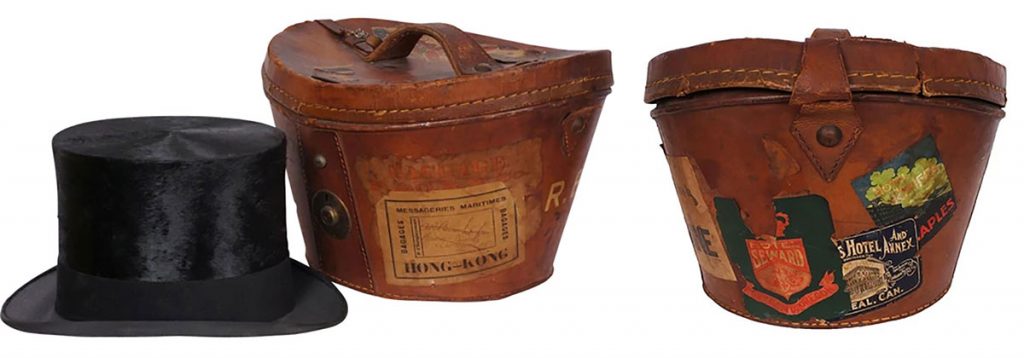
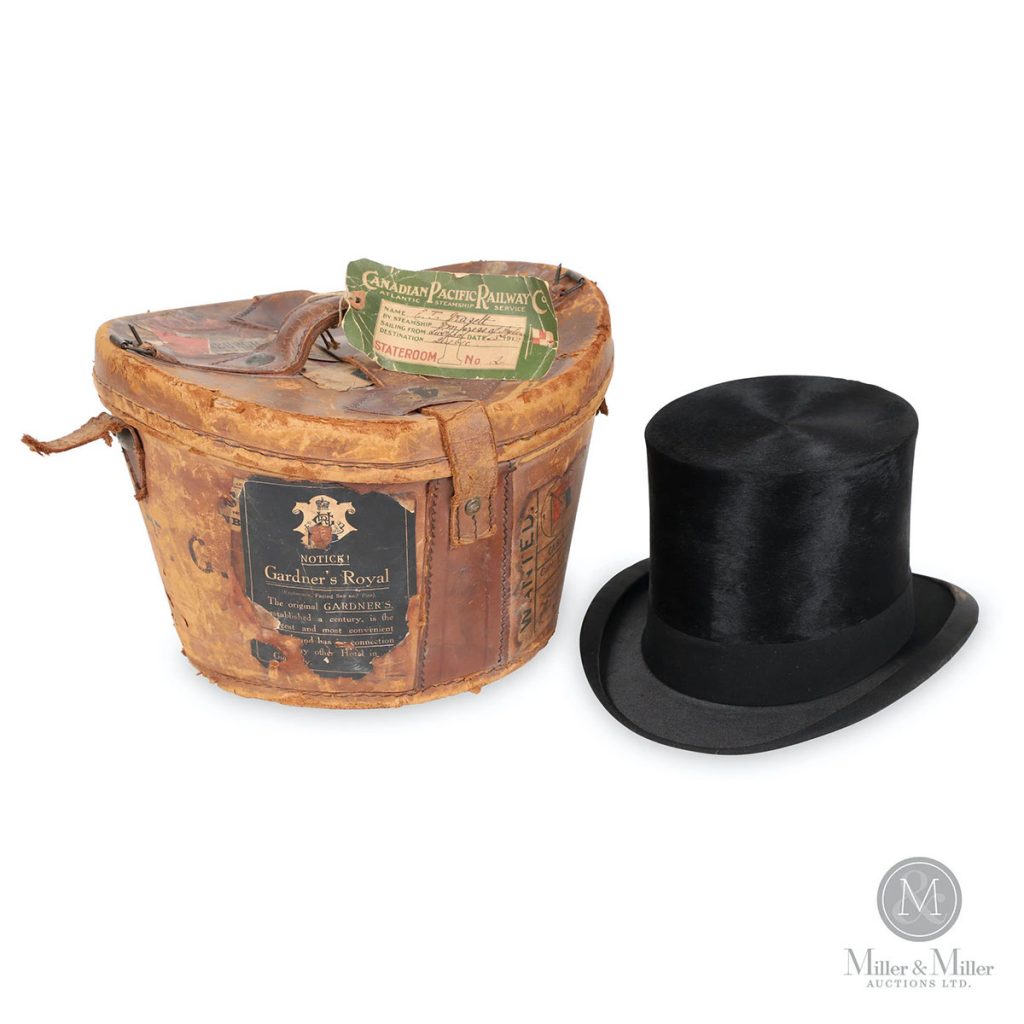
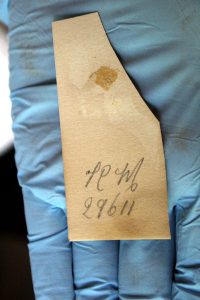 Mystery Tag.
Mystery Tag.
Sometimes, there are elements of an object that are hard to understand without specialized knowledge. In the carrying case for Homer’s top hat, there is a hand-written tag that remains unsolved. Does it say HW 29611 or IPM 29611? Or neither? It could be a model number since it seems unlikely to be a date.
Homer Watson’s Time in London
To date the hat more accurately, documentary information about Homer’s trips to London can be consulted. Watson made seven journeys across the Atlantic to spend time painting, showing his work in galleries, and making connections. These took place in 1887-90, 1891, 1897, 1898-99, 1901, 1902, and 1912.
On his first trip (1887-1890), Homer renewed his connection with the Marquis of Lorne who purchased his painting The Old Mill for Queen Victoria several years prior. At the Marquis’ invitation, Homer and his wife Roxanna attended a garden party at Kensington Palace. It is very likely that Homer bought the top hat during this trip to England because a royal garden party would have required formal day dress.
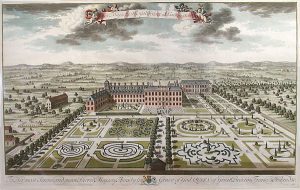
Wider Context – Men’s Fashion in the Late 1880s to 1910s
Top hats were worn only in formal contexts for middle- to upper-class men. Homer would have needed to look the part when trying to sell his work to prestigious galleries and when meeting with upper-class patrons, like the Marquis.
Generally, formal occasions included: weddings, funerals, garden parties, galas, dinner parties, or attending the theatre or opera. Top hats were considered a piece of outerwear, meaning that they were only worn outside or on the way to an event. Notice in Figure 3 how most of the gentlemen have removed their hats, except for the man on the right who has just arrived? It was considered improper to keep a hat on once settled at your destination.
There were numerous social rules associated with men’s hats and clothing during this time: think of the gesture of touching or tipping one’s hat to show respect. In addition to proper comportment, top hats had to be paired with the proper outfit to suit each occasion.
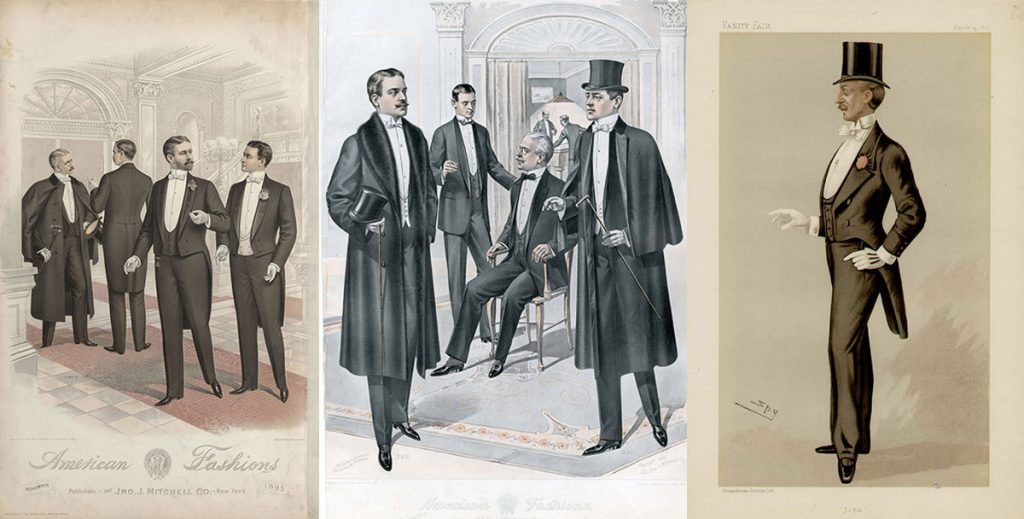
The most formal evening outfit consisted of a long black dress coat with a crisp white shirt and bowtie, a white or black waistcoat, black slacks, polished black leather shoes, a formal overcoat, white gloves, and sometimes a corsage.
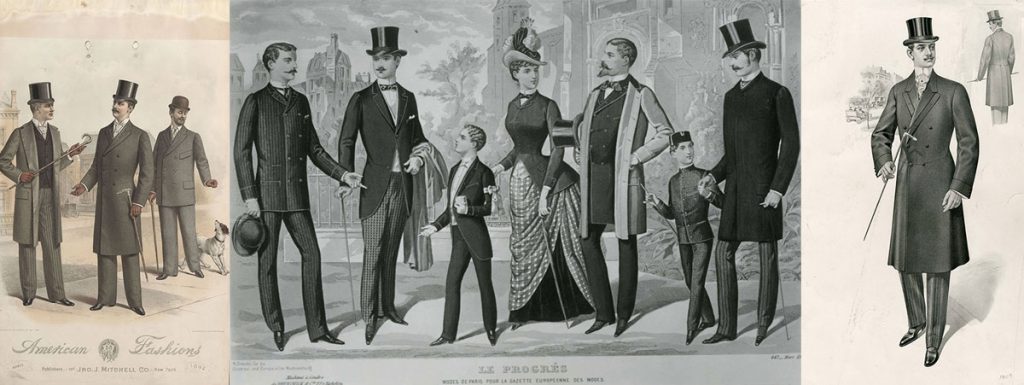
Slightly less formal wear could include a morning coat, black bowtie, a white or light grey tie, shorter black suit jacket, or dark grey pants. A combination of these could be worn for formal occasions during the day or less formal evening occasions (see men in the back of Figure 3 and in Figures 4, 5, and 6).
Wider Context – Men’s Etiquette
An 1897 etiquette book called Manners for Men by Mrs. C.E. Humphry provides insight into what was deemed appropriate for different occasions. Regarding the top hat (also known as silk hat) she says:
“Should a garden party be in question, he may take his choice between tweed suit and low hat or cutaway coat with silk hat [depending on the event].” – pg. 119
“For a morning walk in the Park in summer the straw hat, or low hat and tweed suit, are as correct as the black coat and silk hat.” – pg. 115
“Frequently a silk hat is never seen between Sunday and Sunday. Churchgoers still, to a certain extent, affect it, but in these days of outdoor life, bicycling, and so on, the costume worn by men in church is experiencing the same modifications that characterise it in other departments.” – pg. 120
Mrs. Humphry’s comment about garden parties confirms that Homer would have worn a top hat at Kensington palace with a cutaway coat, or morning coat: a suitably formal outfit for a daytime event. The other two excerpts show that in the late 1890s, top hats were worn less frequently and were becoming reserved for only the most formal occasions.
In Summary
What: Silk top hat with leather case
When: 1897-1890 (made & purchased).
Where: London, England (made & purchased)
Why: For formal occasions men had to dress in a way that was deemed appropriate by the conventions of the day.
A thorough analysis of the materials and features of this object indicate that Homer Watson’s top hat represents the social transition from modest roots in rural Doon to the circles of the European art world. The hat’s materials are of superior quality and purchased from the reputable hat maker Henry Heath Ltd. in London, England. Based on documentary evidence, it is likely that he acquired it on his first trip to England (1887-90) when he was trying to establish himself as a high-calibre artist. Based on this timeline, it is possible that the hat was purchased for a specific occasion during this trip: a formal garden party that Homer attended with his wife Roxanna at Kensington Palace. The hat was clearly a valued and well-made item as Homer continued to wear the it into the 1900s-10s as is evidenced by the Hotel Mossop label. The remaining material evidence of this object helps illuminate details of Homer Watson’s life and provide insight into a small part of his journey from modest upbringing to internationally celebrated Canadian landscape painter.

